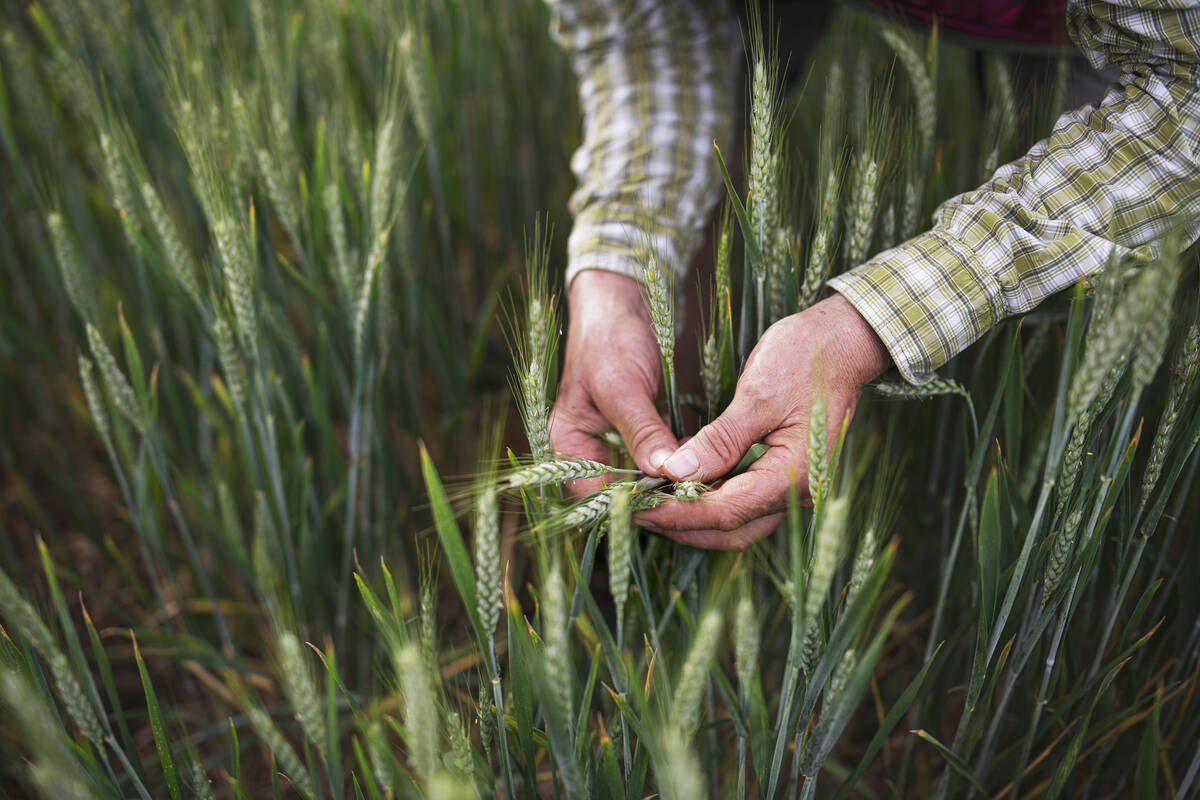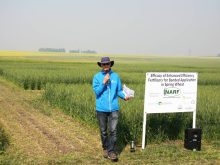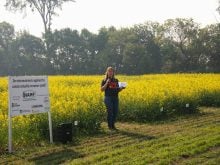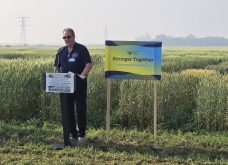The popularity of on-farm field trials across the Prairies has been growing over the past decade as more producers look to make informed decisions about the products and practices they employ on their farms.
On-farm research, why it’s important and how best to conduct it were the focus of a panel discussion at this year’s CropConnect conference, held Feb. 12 and 13 in Winnipeg.
The panel was moderated by Daryl Domitruk, executive director of the Manitoba Pulse and Soybean Growers, which operates the on-farm network that helps farmers test new products and practices for soybean and pulse production.
Read Also

Alberta researcher helps unlock the economics of farming
Lethbridge Polytechnic researcher helping agriculture producers with decision-making tools in economic feasibility
Domitruk says on-farm trials play an important role in translating the results of scientific research into knowledge that producers can use.
“The challenge we have in farming, is that those answers derived by scientists have to be converted into something useful. Virtually every bit of scientific research that occurs on any given day is important. The trick is to make it useful,” he says.
“That’s what on-farm testing is. It takes the same principles as what the lab coat person used and applies them to a farm. In doing so, the main thing that it accomplishes is that it takes that knowledge and puts it in the context of a farm. That is constraints like money, time, equipment, labour, competing uses of resources. It puts it in those contexts and helps the farmer distill … what is useful to them.”
An on-farm trial is defined as the use of different strips or sections in the same field to provide a side-by-side comparison of two or more different practices or products.
Al Manshreck was one of three farmers who took part in the panel discussion. He operates a 3,000-acre family-owned farm near Deloraine, Man. where they grow wheat, barley, canola, beans and oats.
Manshreck began conducting on-farm trials on his farm about a decade ago when he first started growing edible beans and realized “they need more babysitting” than many other crops. That was especially true when it came to determining the right amount of nitrogen to apply.
“We first started (with) 70 pounds. Then we started fooling with that thinking: you put more on, it’s going to be better. Well, we put more on and it wasn’t,” he said, laughing.
“It got to the point where because they’re a higher-value crop, we needed the on-farm testing. It was a fit for us (because) instead of going down and looking in the hopper and saying this strip was fuller than the last strip, we needed to know how many pounds we got on a particular application, whether it’s zero nitrogen or nine pounds of nitrogen.”
Tap into experience
Scott Mowbray runs a 2,000-acre grain farm near the town of Cartwright in south-central Manitoba. He started conducting on-farm trials eight years ago to deal with the highly variable topography of his land, which features both sandy and heavy clay soils. One on-farm research project he’s currently involved in, with University of Manitoba researchers, looks at how cover crops impact his farm.
Mowbray said one of the lessons he has learned about performing on-farm testing is to seek out help from producer groups and other organizations that have experience in conducting such tests.
“Eight or 10 years ago we were doing a few trials, a few products here and there, and not doing a proper job. We weren’t replicating things properly. We weren’t getting proper data and then we weren’t crunching the numbers on that data,” he says.
“Working with the different organizations and people we do, they do all that work for us so it’s been significantly easier. You’re just committed to a little bit extra time to maybe change the application rate or add a different product. Other than that, and a little bit of extra work at harvest, it’s pretty simple.”
Mowbray stresses it’s important to fully understand the results of any on-farm testing in order to reap the benefits of it. For example, while the cover crop testing on his farm has been a money-loser, it has resulted in improved soil health over time.
“Trying to do the math on that and put a dollar value to some of those things is challenging,” he says. “That’s why it’s great to work with people outside of the farm that maybe have a little more knowledge in crunching some of those number and are able to give you some data that you can compare.”
Dean Buchanan runs a family-owned mixed farm near Crystal City in south-central Manitoba that produces cattle and pedigreed seed. He says he’s been doing on-farm testing for years and it’s proven to be a good fit for his operation.
“I always ask a lot of questions (on the farm) so I need answers to those questions. What if we did this or what if we didn’t do that? On-farm testing has helped us figure that out. Do we need to put extra inoculant on our soybeans? Do we need to see more flax?” he says.
One pass or two
Buchanan says some of the field tests he’s participated in have resulted in changes to practices on his farm. For example, he now does just a single pass with soybean inoculants and fungicides on peas rather than the two passes he used to do. Testing also helped him determine that the seeding rate for flax could be lowered, with yields remaining virtually the same.
While each individual trial may not make a huge difference, he points out that cumulatively they can.
Mowbray urges growers who are considering doing on-farm testing to do their homework before signing up to use any products they may not be familiar with.

“It’s amazing the number of products people will try and sell you and they have very little proof to back it up,” he says.
“It’s very important for farmers to make sure when companies are trying to sell them something to ask for replicated third party data from an organization like a university or a college. Make sure they have proper data, that it’s not just a sales brochure. It might only be a couple of bucks an acre which is cheap insurance. But why (spend) a couple of bucks an acre if it’s not doing anything?”
It’s almost a given that some on-farm trials aren’t going to produce any kind of positive response.
Still, that shouldn’t discourage producers from investigating new products or practices, Domitruk says. In such cases, he says, the question that needs to be asked isn’t whether the product worked, but whether there was a need for it in the first place.
“This is where we’re moving in our program to better define what the problem is because on-farm testing, like all research, can do as good a job to help you understand what the problem is as it can to finding a solution to the problem,” he adds.
Manshreck says trials that don’t produce positive results can be just as valuable as those that do — “because the result means that we don’t have to use it, we don’t have to pay for it, we don’t have the hassle of having to do it.”
Mowbray says it’s important for producers who consider doing on-farm trials for the first time to make sure they have equipment that’s “sized a little nicer.” He recalled one on-farm trial he conducted using a 44-foot drill and a 35-foot combine header that left narrow strips between plots, which required a second pass. He now uses a 50-foot drill that doesn’t require a second pass.
He also suggests producers who haven’t previously conducted on-farm trials to think small the first time out.
“The big thing is just start simple. Make sure you’ve got something manageable logistically for you in spring and it’s going to provide you some data that’s going to be useful. There’s no point to doing something just because it’s one of the protocols. You might as well try something that’s going to give you some information that’s useful on your farm.”















